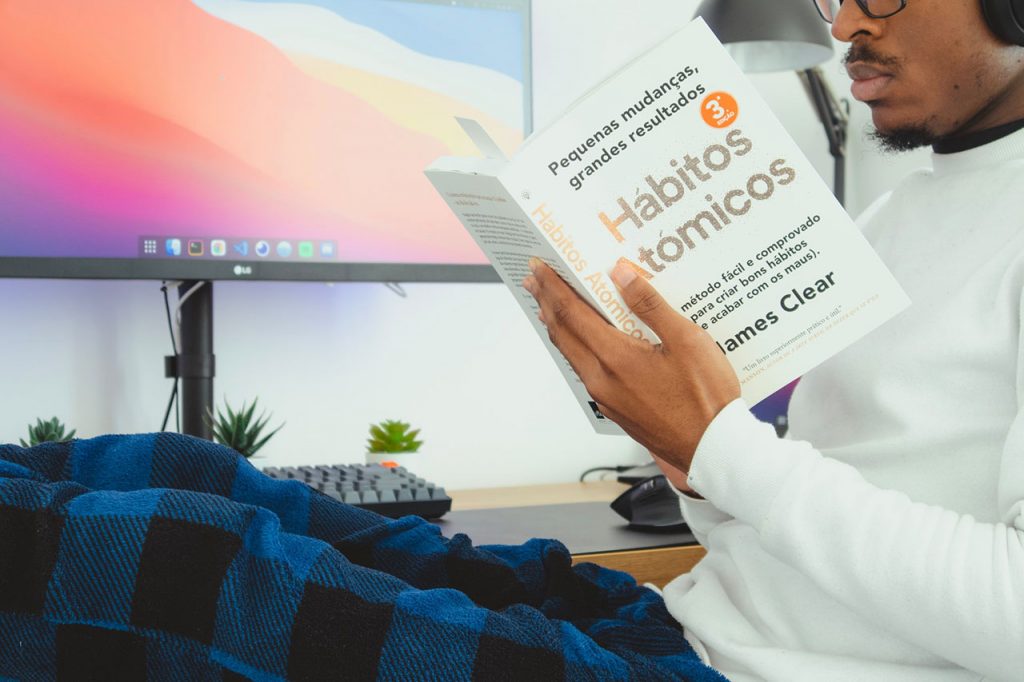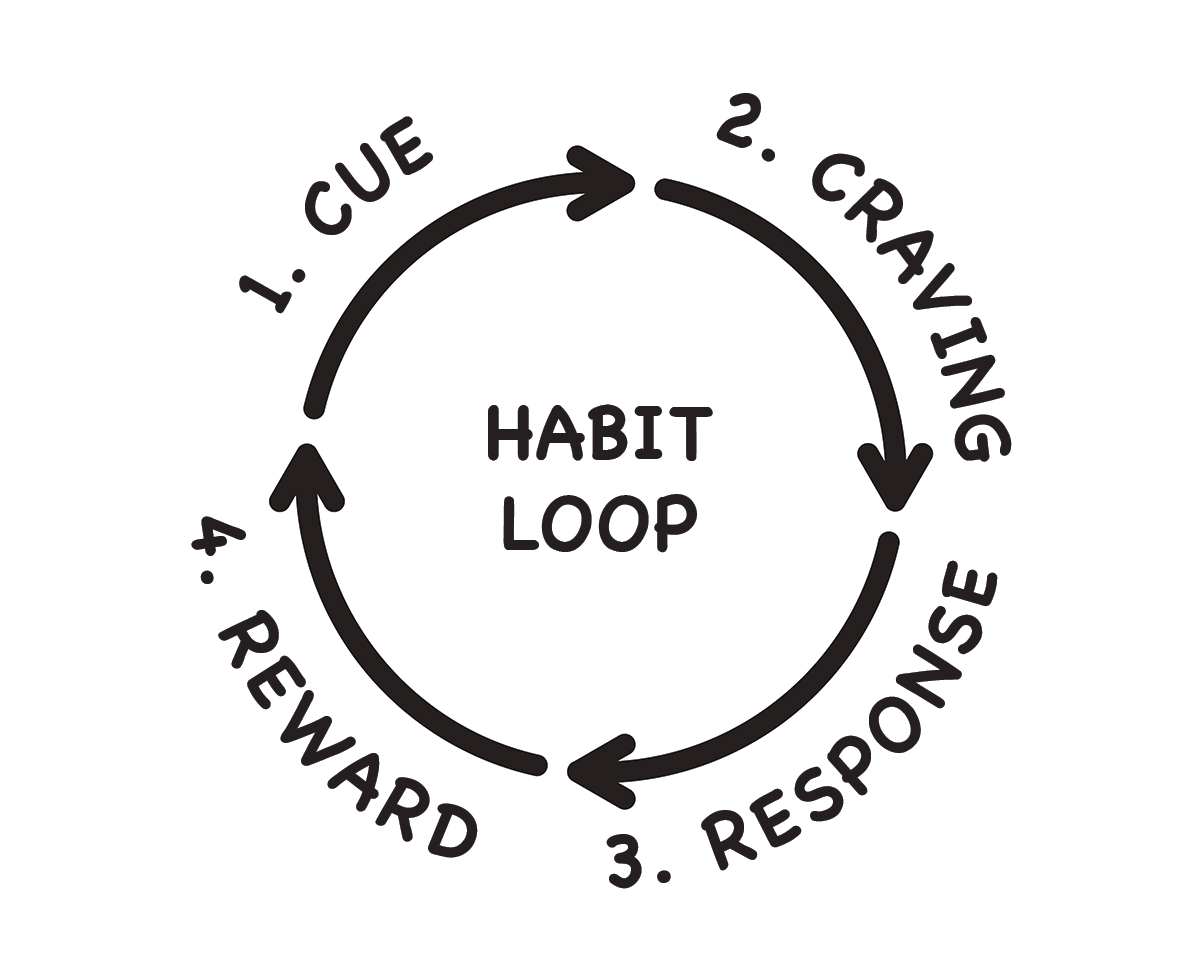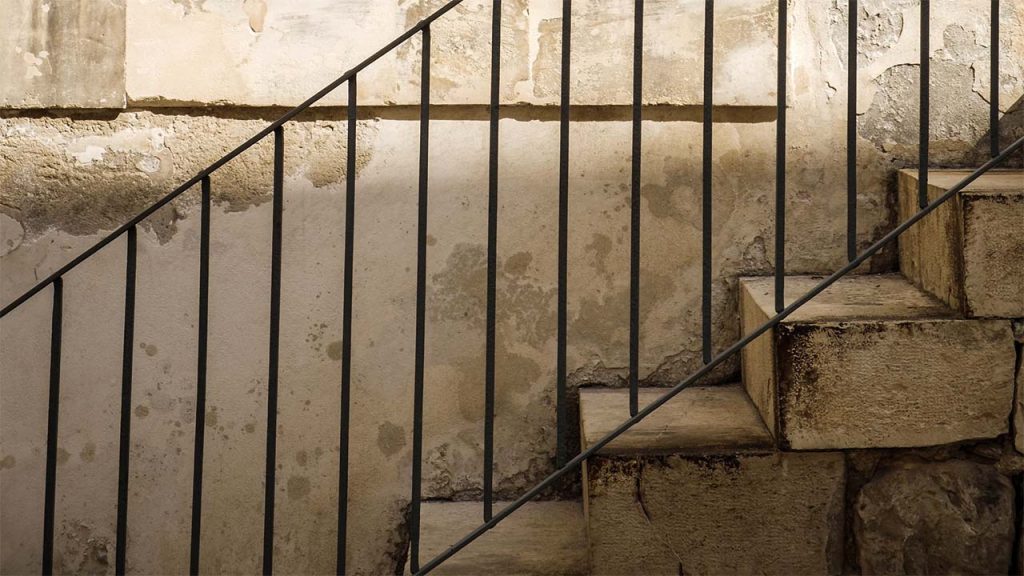Affiliate disclosure: Some of the links below are affiliate links, meaning, at no additional cost to you, I will earn a commission if you click through and make a purchase. As an Amazon Associate I earn from qualifying purchases.
Reach your goals without motivation (4 tiny steps, remarkable results)
So, you’re motivated to reach your goal, right? Aren’t we all?
You’ve set your goal. You are highly motivated. You feel supercharged. You take action!
But, after you’ve taken the first few steps, you start losing momentum. You feel that your motivation is fleeting. Before long, you lose that supercharged energy that drives you to take action in the first place.
Sound familiar?
Next, you understand that to achieve your goal or anything worthwhile, you cannot rely on that fickle and short-lived motivation.
But, how can you reach your goals without motivation?
Then, you realized you need consistency.
That means you need a routine, a system that works to bring you towards your goal.
You need to build new habits, habits specially designed to be the foundation of your goal-achieving system.
So, you get up early, plan your works down to the minute details, and execute them. You repeat it the next day, and the next, and the next.
Then, you start feeling harder and harder to do the tasks you’ve planned. You’re not as highly motivated as the first day. After a few days or weeks, you’re falling back to your old habits!
Again, sound familiar?
Why is it so hard to work towards our goals?
Why is it so hard to be consistent?
Why is it so difficult to build a new good habit?
And, most importantly, why do old habits always win?
What is missing?
Those are the questions I struggled with for some time in the past.
I was trying to build a consistent practicing habit for my meditation. Like most aspiring meditation practitioners, I also faced all the common meditation hindrances and had to find a way to eliminate them.
But, successfully overcoming those obstacles once is one thing. Being able to do that repeatedly is something different entirely. I realized I needed to build a new practicing habit.
So, I began the search for answers.
At some point, I found them in this amazing book by James Clear.
The answer is shockingly eye-opening.
It’s because I was relying on motivation to reach my goals.
Even when we’re trying to build consistency, unaware, we’re still giving motivation too much credit. It’s like it’s been preprogrammed in our subconscious.
That book taught me about tiny changes that bring remarkable results, an easy and proven way to build good habits and break bad ones, written by an expert on habits and behavioral change who has been experimenting on himself for years.
I tried them and found them to be spectacularly effective. I was mind-blown! So, I adopted them and have been implementing them ever since.
Now, I feel the urge to share them with you. Because it would be incomplete to promote the meditative lifestyle and its benefits without providing the necessary framework to help you follow through. That is the reason why I wrote this post.
Whatever your goal is, whether it’s losing weight, physical fitness, better health, higher productivity, better relationships, starting a new business or project, becoming an artist or a musician, or practicing meditation regularly, you need to work consistently towards that goal.
And, to work consistently, you cannot rely on motivation. Why? Because motivation is moody. It comes and goes. Rarely, it stays long enough. Therefore, it’s unreliable.
Relying on motivation to achieve your goals is kind of setting yourself up for failure right from the start.
What you need is a system that works in auto-pilot to direct and push you towards your goal. And, the foundation of that system is a series of purposely designed habits.
Unlike motivation, our habits are consistent and much more powerful. That’s where we need to work on.
And, what about the goals? Do you think your goals determine your success?
You know what? In any competition, in any field, winners and losers have the same goals.
If that’s so, then, the goals cannot be the determining factor.
According to the expert who wrote the book,
“You do not rise to the level of your goals. You fall to the level of your systems.”
So, forget about motivation. Don’t waste your energy thinking too much about your goals either. Instead, focus on building your system by establishing the necessary habits.
But the question is,
How to build good habits that last?

First, what is a habit?
A habit is a routine or behavior that is performed regularly and, in many cases, automatically. Habits are reliable solutions to recurring problems in our environment.
Our brains are always working non-consciously to respond to situations we face regularly.
The process begins with trials and errors, analyzing and comprehending the situation we’re facing based on our past experiences.
Successful trials will be memorized and repeated the next time we face similar situations.
Repeated enough times, the process will become automatic.
That’s how habits are formed.
Once a habit is formed, our brains don’t need to go through the same thorough analysis and comprehension period as the first time. Our brains will just skip all that and take the shortcut.
In other words, habits are mental shortcuts learned from experience.
That habit-forming process is occurring constantly. That’s why we, humans are a creature of habit.
Naturally, habit formation follows the easiest path. Therefore, we rarely consciously intervene. That is the reason why we tend to overlook it.
Since the process follows the path of least resistance, combined with our natural tendency to find instant gratification, it’s so easy to end up with bad habits.
So, to build habits that last, we need to learn how habits are formed, and then design our environment to follow that process intentionally.
According to the book, which I wholeheartedly agree with, habit formation goes through four stages: cue, craving, response, reward. They’re the backbone of every habit. Our brains run through those four steps in the same order each time.
The cue, craving, response, and reward are different from person to person. But, to become a habit, any behavior needs to go through those same four steps.
The cue is anything that triggers our brains to initiate a behavior. With it, our brains expect a reward.
Cues differ individually. Things that are cues to some people might mean nothing to others. For example, the sound of slot machines can be a potential cue for a gambler. But, for non-gamblers, it’s just noise.
See, cues are meaningless before we give them meanings. They become triggers only after we interpret them. Our thoughts, feelings, and emotions influence our interpretation.
Because the cue tells us that a reward is just around the corner, naturally, it leads to craving, which is the second stage.
Craving provides the push to act. It’s kind of like natural motivation or desire. Without it, there’s no reason to act.
What we crave is not the action itself but the change in state it brings. For example, your craving is not turning on the television, but being entertained. It’s not checking the social media that you crave. It’s the feeling after satisfying your curiosity.
Craving then triggers a response. The response is the would-be habit we carry out. It can be in the form of a thought or a physical action.
Two things will determine whether a response will take place or not. How motivated you are and how difficult it will be. By difficult, I mean related to your current abilities. It also means how many obstacles you’ll face and how hard they are.
If you think a particular action is too difficult given your current capabilities or too much resistance ahead, chances are, you won’t do it.
It’s obviously simple. A habit can only happen if you’re capable of doing it, and you can overcome the challenges given the situation.
The final stage is the reward the response brings. Rewards are the end goal of every habit.
To sum it up,
the cue is about acknowledging the reward.
The craving is about wanting the reward.
The response is about acquiring the reward.
We pursue rewards because they satisfy us and they teach us. Rewards relieve us from craving and teach us which responses are worth remembering for future reference.
If a response results in disappointment, our brains will tag it as not-to-be-repeated.
So, the feeling of satisfaction and disappointment is a kind of feedback mechanism for our brains to distinguish useful actions from useless ones.
Rewards are the conclusion of the feedback loop. They complete the habit cycle.
The absence of any of the four stages negates the chance of a behavior becoming a habit. Without the cue, your habit won’t even start. Lower the craving and you won’t have enough motivation to take action. Make the response difficult and you’ll be incapable of doing it. And if the reward is not satisfying enough, you’ll have no reason to do it again in the future.
Without the first three, a behavior will not take place. Without all four, a behavior will not be repeated.
In summary, the cue triggers a craving, which motivates a response, which provides a reward, which satisfies the craving and, ultimately, becomes associated with the cue. Together, these four steps form a neurological feedback loop: cue, craving, response, reward that ultimately allows us to create automatic habits. This cycle is known as the habit loop.

This habit loop is not something that occurs occasionally. It’s a never-ending process that’s happening and active during every moment we are alive whether we are aware or not. Because it happens in a split second, we tend to ignore it.
I bet most of us don’t even notice that our current habits are formed this way.
Now that we understand the process of habit formation, we can design our four tiny steps to make new good habits last. And, in the process, we can also make our current bad habits broken.
This time, we’ll do it intentionally with awareness.
We design our four tiny steps by following the four laws of behavior change.
4 tiny steps to build good habits (and break bad ones)

The four laws of behavior change are a set of simple rules for creating good habits and breaking bad ones.
For creating good habits:
- The 1st law (Cue): Make it obvious.
- The 2nd law (Craving): Make it attractive.
- The 3rd law (Response): Make it easy.
- The 4th law (Reward): Make it satisfying.
For breaking bad habits, we invert them:
- The 1st law (Cue): Make it invisible.
- The 2nd law (Craving): Make it unattractive.
- The 3rd law (Response): Make it difficult.
- The 4th law (Reward): Make it unsatisfying.
So, to design your four habit-forming steps, try to answer these four questions:
- How can I make it obvious?
- How can I make it attractive?
- How can I make it easy?
- How can I make it satisfying?
For example, to make the cue for my morning sitting meditation practice obvious, I meditate immediately after making my bed. Here, making my bed is my cue.
For the evening, I schedule it in my phone’s reminders so that there’s no way I will miss my cue.
To make it attractive, I brew and enjoy my favorite cup of coffee after I’ve completed my morning sitting meditation session.
For the evening, I practice this 10-minute sitting meditation preparation exercise right before my sitting session. It always makes me feel fresh and gives me a very comfortable sitting.
To make it easy, I start small. I only commit myself to 5-minute sitting. If I set a target to practice for one hour, that would be the opposite of making it easy.
Additionally, I prepare my cushion at the same spot in my room beforehand, so that it’s always ready and kind of waiting for me.
By this point, the when and where are set.
Enjoying a delicious cup of freshly brewed coffee is a satisfying reward for my morning meditation. And for my evening meditation, a comfortable sitting as a result of the preparation exercise beforehand plus mental clarity and physical ease I experience afterward is very enjoyable.
Those immediate rewards then become associated with the cues.
Although initially I only plan to meditate for 5 minutes, in reality, I often end up much longer than that with 30 minutes being not very uncommon.
Another example, this time for breaking a bad habit:
Let’s say you need to break the habit of frequently checking social media during work time because it impairs your productivity.
Reset your social media passwords, uninstall the apps, turn off your phone, and lock it in another room.
It makes the cue invisible. At the same time, the behavior becomes unattractive and difficult because now you’ll need to get up from your desk, walk to the other room, unlock the door, and then turn on your phone, reinstall the apps, and create new passwords to login to your social media apps.
The most effective way to break bad habits is by removing their cues and making the responses difficult and impractical to perform.
There are many creative ways to formulate those steps to suit your needs you never thought possible.
Need some ideas?
Real-life examples in the book will help inspire you.
Wrap it up
At best, motivation will help you get started. Habits, on the other hand, will sustain your efforts.
To become a habit, a behavior needs to be repeated enough times.
We are likely to repeat a behavior when the reward is satisfying and immediate.
The reason good habits are more difficult to form is that usually, the reward is far in the future.
Our brains don’t respond well to such delayed gratification.
The reason bad habits prevail is that the rewards are immediate.
That’s why we need to design and formulate our strategy for habit-forming in such a way that provides some kind of immediate rewards to be associated with our cues.
The process of designing and formulating good new habits begins with awareness.
Based on personal experience, the best way to strengthen awareness is through meditation.
With a strengthened awareness comes many other unexpected benefits as a bonus.
If you’re looking for a meditation course, check out my recommendation here.
You can also read my review here.
The core idea of the book is the four laws of behavior change: cue, craving, response, reward. There lies the secret of how to reach your goals without motivation.
The book is more like an operating manual for behavior change. It provides the actual time-tested implementation strategies to carry it through. And no, they’re not some trivial nonsense, but small actionable steps that might seem insignificant at first, but will accumulate over time into real results.
Since it is based on the author’s years of research and personal experience, the book is jam-packed with time-tested and actionable strategies you can learn from.
You will learn:
- Three layers of behavior change. How to formulate strategies for behavior change in the right direction.
- How to design your environment to help you establish new habits without relying on motivation
- How to keep your habits on-track
- How to make good habits inevitable and bad habits impossible
- How to find a game where the odds are in your favor
- How to stop procrastinating by using the two-minute rule
- How to stay motivated and avoid boredom when forming a new habit using the Goldilocks Rule.
- The secret to results that last.
- And much more.
As the author said,
“Success is the product of daily habits, not once-in-a-lifetime transformations.”
It’s about tiny changes that bring remarkable results.
That’s why the book is titled “Atomic Habits.”
Recommended posts
- Forget Self-Improvement, Do This Instead!
- 2 Main Reasons Why Most Self-Improvement Fails and How to Avoid Them
- How to Stop Falling Asleep During Meditation? Try These 10 Actionable Tricks
- Practical Reasons to Meditate for Lazy People
- Breath Meditation FAQ: Why Do So Many Meditation Methods Focus on the Breath?
- How to Take Advantage of Your Pessimistic Thoughts and Beware of Your Optimistic Thoughts
- How to Take Advantage of Your Negative Emotions and Make Peace with Them
- The Most Effective Hack for Letting Go (A Meditative Approach to Natural Acceptance)
Featured image by Free-Photos from Pixabay
- Too Much Mindfulness, Is There Such a Thing? - March 17, 2022
- 10 Ways Meditation Can Help Improve Your Finance (Number 9 Might Surprise You!) - January 7, 2022
- Forget Self-Improvement, Do This Instead! - September 16, 2021

